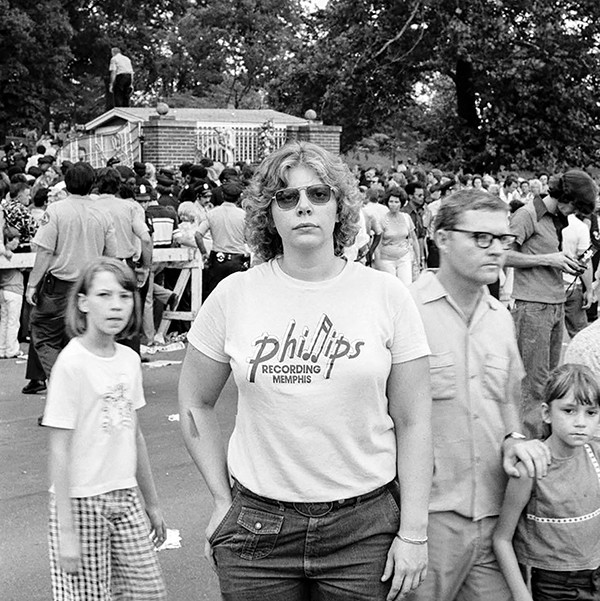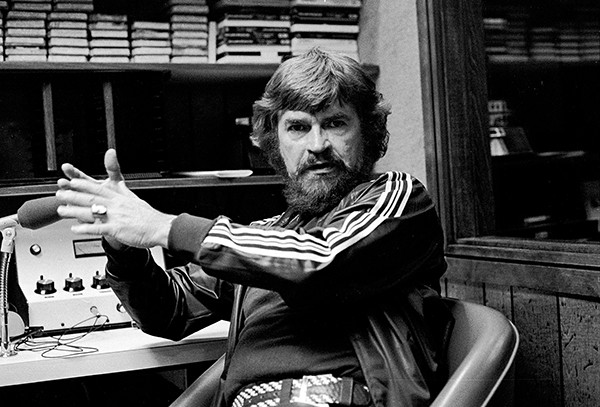For many Americans, the death of Elvis Presley in 1977 marked the end of an age of innocence in rock-and-roll. But it had more significance in Memphis, a capstone on a series of events that decimated the musical momentum the city had gathered in previous decades.
Pat Rainer, who documented those times in her photography, puts it this way: “Stax was bankrupt, Beale Street was boarded up, the major record labels had moved out, and it was like, ‘Wait a minute! We’re still here!’ Jim Dickinson coined the phrase that what we did was ‘guerrilla video’ or ‘guerrilla recording.’ I was his disciple, and I would have walked the fires of hell for him.”

Pat Rainer at Graceland the day after Elvis died
Rainer, a Memphis native who studied radio, TV, and film production at Memphis State University, was dissatisfied with academia and struck out on her own, working in record stores and falling in with a tight-knit community of bohemians and creators who came to define the post-Elvis era. She worked at the Yellow Submarine record shop on Poplar, whose owner, Jim Blake, would eventually start the maverick independent label, Barbarian Records. “Blake founded the company when Dickinson told him, ‘You know, you should make a record of Jerry Lawler and sell it at the wrestling matches.’ And I saw a light bulb go off over Blake’s head. The three of us kinda pitched in together, but Blake was the figurehead.”
The Lawler records sold, helping to fund hours of recording sessions by Dickinson, Lesa Aldridge, the Klitz, and others — mostly unreleased. The label was emblematic of a whole scene germinating through the 1970s. “It was a community of artists who all worked in concert with one another, whether it was the musicians or the sculptors or the painters or the photographers or whatever. Our little group of people included Dickinson, [Sid] Selvidge, Lee Baker, Mud Boy, Alex [Chilton], John Fry, Knox Phillips, Bill Eggleston, and Tav [Falco]. We all wanted to create art. I just kinda fell into photography.”
Now, we’re all the beneficiaries of Rainer’s chosen path, as the Stax Museum of American Soul Music opens Rainer’s exhibit, “Chaos and the Cosmos: Inside Memphis Music’s Lost Decade, 1977-1986,” this Friday.

Sam Phillips
“There’s great pictures of Sam Phillips,” Rainer says. “There’s pictures of Willie Mitchell and Al Green in the control room at Hi; Knox and Jerry in the control room at Phillips; Alex and Jim in the studio; Johnny Woods and Furry [Lewis] when we recorded the Beale Street record.”
That 1978 record marked a turning point, where the fringe took up the mantle as guardians of both past and future. “I mean, think of what would have happened if we hadn’t fought to keep them from letting the Orpheum be bought by the Jehovah’s Witnesses!” Rainer exclaims. “And there’s a big thanks due Jim, because he went down there to those guys at the Memphis Development Foundation and struck a deal to make this Beale Street Saturday Night record to raise money to restore the Orpheum.”
It was that concert that seemed to chart the course for independent music-makers in the city. While Mud Boy, Chilton, and Falco ultimately became guiding stars of the “guerrilla” music that has come to define 21st century Memphis, there was little inkling of such possibilities at the time. “Looking back on it,” says Rainer, “it still blows my mind.”